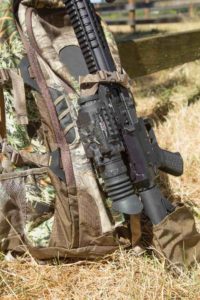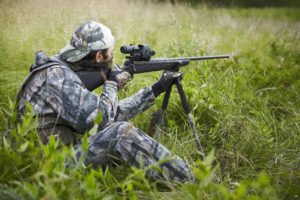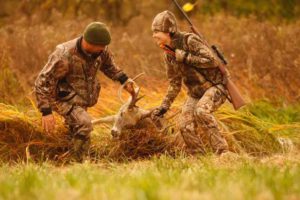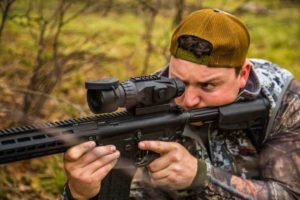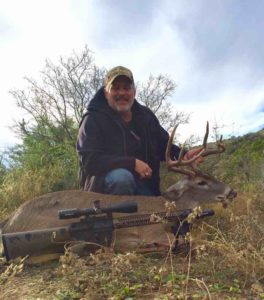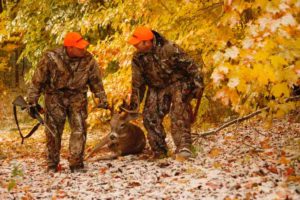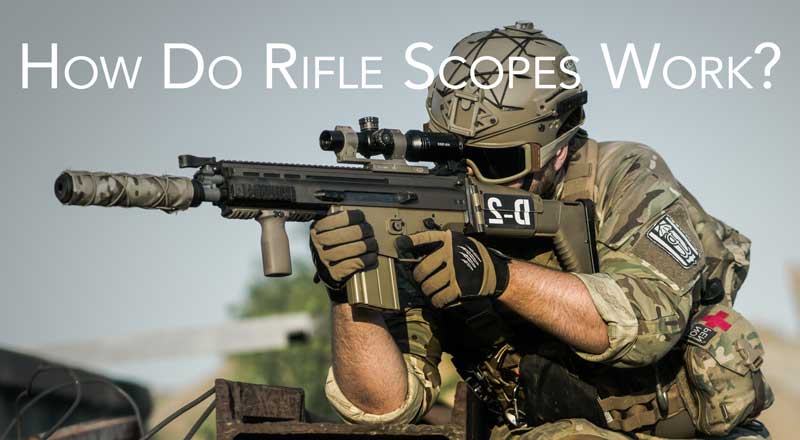
‘The right tool for the job’ – with the correct rifle scope, you can take your shooting to the next level.
Learn how rifle scopes work and the components that make them function.
Understand how magnification, reticles, and adjustments work together to provide you with a clear image.
Explore waterproofing and fog-proofing, as well as magnifying power, variable power scopes, and reticles.
Discover shooting fundamentals, sports, and gear for recreational shooting, hunting, and optics.
Let’s take a deep dive into the world of rifle scopes and learn how to shoot like a pro.
Key Takeaways
- Riflescopes consist of various components such as objective lens, erector lens, magnifying lens, and ocular lens, which work together to capture and focus light for clear vision.
- Waterproofing and fog-proofing techniques are used in riflescope construction to ensure clear vision in various weather conditions.
- Magnifying power and variable power scopes allow users to adjust the magnification according to their shooting requirements.
- Reticles and adjustments play a crucial role in zeroing the riflescope and estimating shot placement at different distances.
Components and Functioning of Riflescopes
By understanding the components and functioning of riflescopes, you’ll be able to adjust the magnification, reticles, and other features for a successful shot.
The objective lens is the first component and it’s large to capture more light. Objective lenses are coated with proprietary coatings to filter certain types of light and reduce glare.
The erector system consists of two lenses that flip the image back to a right-side-up orientation and also adjust the reticle’s elevation. Magnification is performed by these lenses, creating a second focal point for the reticle.
Following the erector system, two lenses in the eyepiece allow you to focus the image and reticle. This creates the exit pupil, which should be the correct distance from the ocular lens for target acquisition and recoil impact.
Finally, the objective bell protects the lens from external factors.
With the right equipment and knowledge, you’ll have the ability to master your rifle for an accurate shot.
Waterproofing and Fog-proofing
You can ensure clear vision in various conditions with a riflescope’s waterproofing and fog-proofing features. To prevent condensation or fogging, the gaps between the lenses and the housing are sealed with O-rings and air is replaced with moisture-free gas. This helps maintain clarity even in bad weather or when hunting in the rain.
Additionally, the lenses are water and fog-proof, further protecting against any moisture or dust entering the tube. With the right combination of sealing and gas pressure, you can ensure clear vision in all conditions.
For hunters, this is especially important as it can make the difference between success and failure. If your lenses get fogged up, you won’t be able to accurately acquire your target. The same goes for recreational shooters, as it can be hard to aim when your lenses are fogged up.
Magnifying Power and Variable Power Scopes
You can choose between fixed and variable power scopes depending on your shooting requirements, as they both offer different magnifying power. Magnification is determined by the size of the objective lens and the distance between the objective lens and the ocular lens. The magnifying power of a scope indicates how much larger the field of view appears.
Fixed power scopes have a set magnification, such as 3X40, while variable power scopes allow users to adjust magnification between 3 and 9X40. Adjusting the magnification can be done by rotating the power ring or adjusting the zoom lever on the side of the scope.
When choosing a scope, it’s important to determine what magnification needs you have. Fixed power scopes are often cheaper than variable power scopes, however they offer less versatility. Variable power scopes may cost more but they allow you to adjust the magnification to suit different shooting scenarios. These scopes are ideal for hunting and long range shooting. They also offer more flexibility for different types of shooting, such as target shooting and plinking.
When choosing the right magnification for your scope, there are several factors to consider. First, decide what type of shooting you’ll be doing and how far away the target will be. Also, consider the size and weight of the scope and the type of reticle you prefer.
Reticles and Adjustments
You can choose from a variety of reticles to suit your shooting needs, with adjustments for windage and elevation to help you zero the rifle scope. Reticles are usually crosshair patterns made of fine wires or etched into glass. Different types of reticles serve different purposes and can even provide an estimation of shot placement at different distances.
Windage adjustment is the side-to-side alignment, while elevation adjustment is the up-and-down alignment. When adjusting the reticle placement, it’s important to remember that it will affect the magnification changes. A reticle’s placement can also be used to quickly adjust the windage and elevation of the scope, giving you more control over the accuracy of your shots.
With the right reticle and proper adjustment, you can hone your skills and become a more accurate shooter.
Shooting Fundamentals, Shooting Sports, Gear for Recreational Shooting, Hunting, and Optics
To become a better shooter and maximize your shooting performance, it’s essential to master the basics and invest in quality gear for recreational shooting, hunting, and optics.
The NRA offers a range of shooting sports programs and courses that teach safe gun handling, rifle parts, and operation, as well as shooting fundamentals, range rules, and various shooting positions. For those interested in long range marksmanship, the NRA Outdoors Long Range Schools provide instruction from experienced competition and military veteran shooters.
Additionally, it’s important to be aware of the gear needed for recreational shooting, hunting, and optics. Quality glass is essential for enhancing target acquisition. Optic selection is key to maximizing shooting performance, and there are riflescopes available at various price points from less than $100 to high-end precision optics.
Frequently Asked Questions
What Is the Best Type of Reticle for Target Shooting?
When choosing optics for target shooting, consider mounting considerations, reticle patterns, ballistic calculations, and illumination technology. A reticle with a fine crosshair pattern and illuminated center dot is best for accuracy. Make sure the reticle is appropriate for your shooting style and ballistics. Master the basics and you’ll be well on your way to successful target shooting.
What Is the Purpose of the Objective Bell?
The objective bell houses the objective lens, which provides optical quality, magnification levels, and lens clarity. Its purpose is to protect the lens from dust and debris, as well as to provide eye relief and ensure a clear image. It also helps to keep lens coatings in place, allowing you to enjoy the best possible image quality.
How Often Should I Clean My Riflescope?
Clean your riflescope regularly, replacing lenses and lens coatings as needed. Check scope mounts for proper alignment and adjust magnification and parallax levels as required. Detailed observation and empathy are key to mastering a riflescope’s operation. Investing in regular upkeep ensures peak performance and accuracy.
What Is the Difference Between a Fixed Power and a Variable Power Scope?
A fixed power scope offers one magnification level, while a variable power scope offers a range of magnifications. Eye relief, coating types, lens clarity, and lens size vary depending on the scope. Invest in a quality variable power scope to benefit from its wide magnification range and superior lens clarity.
How Do I Adjust the Windage and Elevation on My Riflescope?
Adjust your riflescope’s windage and elevation by adjusting the magnification levels, reticle design, eye relief, parallax adjustment, and mounting system. Understand the fine details of each adjustment to ensure accuracy and precision. With mastery, you’ll be able to make the necessary changes quickly and effectively.
Conclusion
Rifle scopes are an invaluable tool for shooters of all kinds. From recreational shooting to hunting, rifle scopes can be adjusted to meet any shooter’s needs.
With the right knowledge and practice, rifle scopes can help you become a better shooter and hit your target every time. According to studies, shooters using rifle scopes are twice as accurate as those without.
With the right gear and a little practice, you too can become a pro shooter.
